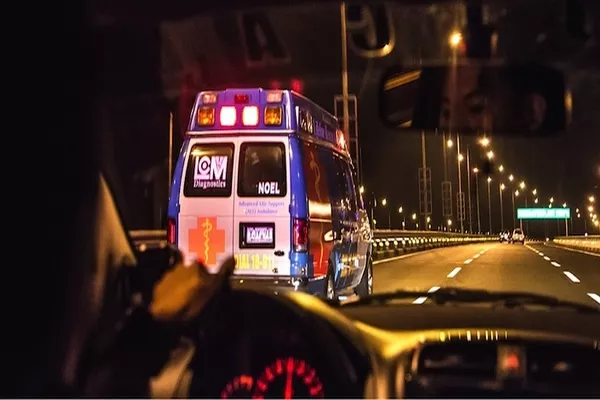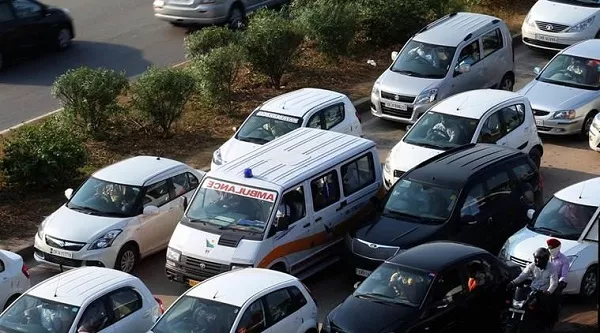In most scenarios, if you are on the steering wheel, waiting for the traffic to move and get on your way home, you'd rarely see an emergency situation happen. In a spur of the moment, your idle state becomes a state of panic as you see blaring lights of red and blue and hear wailing sounds of a siren, waiting to pass through the heavy traffic as well.
How would you respond accordingly? Before learning the how-tos, the basic guide is into the meaning of “right of way”. In a nutshell, this phrase means that it determines which vehicle is given the utmost priority to go ahead and immediately tells another vehicle to let it pass through.
Why? There is always an assumption that vehicles like ambulances, police patrol cars and fire trucks have an emergency case to respond to and they have to do so in time. For these uniformed men, time is paramount into saving a life or a property.
This is how people react to an ambulance in different countries
In this article, Philkotse.com will provide you with helpful driving guidelines in clearing a path when an ambulance is behind you.
1. Awareness is the key
Whenever you are in control of the steering wheel, you have to exercise alertness and awareness as to what may happen in your surroundings.
One key problem that some ambulance drivers notice is that drivers are simply unaware of what is happening around them. It might be that the driver hasn't caught the image of the ambulance on his side mirrors, he's too immersed on the music playing that is notched up to the maximum volume or worse, distracted by a constant notification on their mobile phone, to say the least.
Some would even dare to say that with a loud siren like that; it’s as if your own music gets drowned by the warning sound. But, you can never really tell, because if that's the case, how come some drivers can't give way?
In addition, the lights of red and blue in the daytime cannot be seen as it is well reflected in the sun's rays as well. If it’s night, that’s a different story to tell as well. If you want to lend a helping hand to ambulance drivers and practically save a life, be aware of what's going on in your surroundings.
Don't immerse yourself and be carried away with loud music and don't use your phone when you are driving.

When driving, you have to exercise alertness and awareness as to what may happen in your surroundings.
2. Keep calm and don't panic
If you’re clearly bored with the afternoon traffic and may be lulling yourself to sleep, chances are, you'll be startled to hear sirens coming up from behind you. And when panic sets in, you can either freeze, rendering you unaware of how to respond to the situation or, make a wrong turn left and delay the response time.
Bear in mind that when you’re at the back of a steering wheel awareness and calmness should be exercised. These two values go hand in hand into guiding you with making a safe and logical approach when you are driving. So the next time, an ambulance starts going out of nowhere and ends up behind you, calmly assess the situation and find a way to let the vehicle pass.

Bear in mind that when you’re at the back of a steering wheel awareness and calmness should be exercised.
3. Move to the right if possible
The universal principle that everyone should follow is to keep right and if possible move to the right to allow emergency vehicles to pass. For example, if you’re in an expressway with a speed limit of 100km/h, the best way for you to exercise this principle is to slow down, signal and move to the right.
If you’re driving on a two-lane road (one that's going and one that's coming), the same principle applies. Slow down, signal and slowly move to the right.
If you’re on a one-way road, assess the street first to determine whether going right or moving left is the best idea. It is important to signal where you would like to turn to give the driver a clear signal to where he can pass. What is the basis for this principle you might ask, lies written in the 54-year old Republic Act 4136.

The universal principle that everyone should follow is to keep right and if possible move to the right to allow emergency vehicles to pass.
4. Do not block any intersection passage
Intersections are tricky. When an emergency vehicle comes up, the rule is that all vehicles coming from all direction should stop and yield to it. However, be careful not to block any intersection passage as it can come up from your direction.
Also, if an emergency vehicle comes from behind you, do not make a left turn. As it is a policy for emergency vehicle drivers to pass by the left (to counterflow traffic). After all, you do not want to collide with an emergency vehicle and risk the chance of being reprimanded for not being aware of traffic laws.
When an emergency vehicle comes up, the rule is that all vehicles coming from all direction should stop and yield to it.
5. Make space
There will be instances wherein an emergency vehicle would try to respond during rush hours. In these moments, you know it would be practically impossible to move or even squeak in to let the vehicle pass through. Don't worry, the driver understands the situation and would be likely to steer away from that busy road possible.

There are chances that an emergency vehicle would try to respond during rush hours.
Remember, time is of the essence for these drivers. It is up to them to save and respond in time during an emergency. To be nice when driving is to lend a helping hand, by moving to the right and giving them space to go through.












